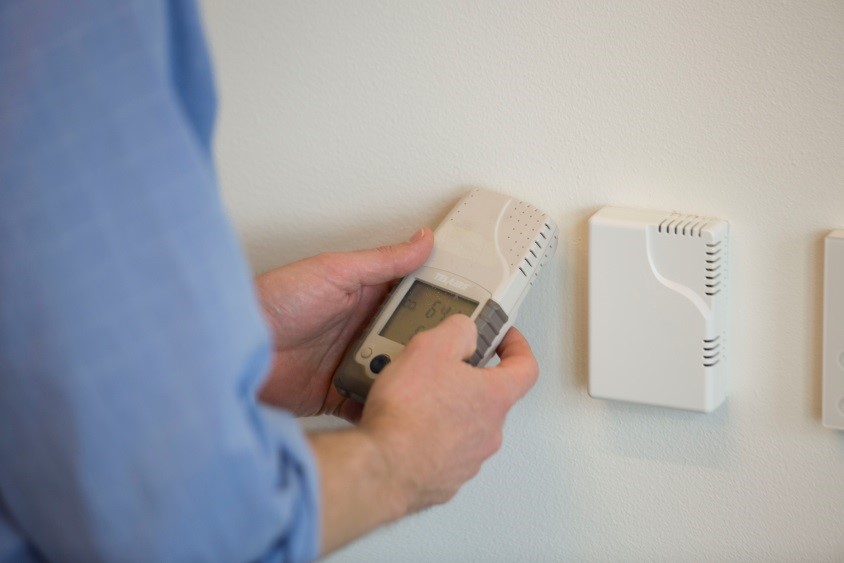Save energy by reducing excess ventilation
Energy savings and lessons learned from observed, practical approaches to demand control ventilation
Demand control ventilation (DCV) systems use sensors — generally either CO2 or occupancy sensors — to estimate the actual number of people in an area and supply only as much ventilation air as is needed at a given time. DCV has the potential to save a substantial portion of building energy use in extreme climates like the northern Midwest.
While DCV has been in use for over 20 years and its theoretical impacts well demonstrated, little is known about its operation and energy performance in real buildings. And even less is known about its performance in complex multizone systems.
This project aims to provide information to fill knowledge gaps in
- quantifying impacts of DCV implementation in the Midwest,
- improving existing system operation through commissioning, and
- general DCV best practices.
Meeting these objectives should create opportunities for implementing DCV in more projects throughout the northern climates of the United States. We focused specifically on multizone, non-packaged systems because they serve a large portion of DCV floorspace but are both less understood and substantially more complex than single zone rooftop units.
Key observations

There are a large variety of approaches to controlling ventilation in Minnesota. There was no majority practicing a common approach that we observed. Many designers favor a relatively aggressive approach; 67% used direct control of outdoor air (OA) dampers (without consideration for system ventilation efficiency).
We measured a sample of six systems over all seasons, and found:
Annual savings from DCV in multizone systems varied from $0.35 per cfm of OA to $1.14/cfm. The median measured annual savings was $0.50/cfm.
Depending on the size of the overall system, this yields a payback of 4-8 years (shorter paybacks for larger systems).
Recommissioning was very beneficial to half of the systems, yielding an additional 48% savings in those systems. This also suggests the importance of initial commissioning in new systems.
Along the way we learned a number of lessons to improve design in execution of DCV:
There are a couple of sequences that are considered best practice, and the industry should improve standardization on these.
A decision should be made as to who (engineer or contractor) is responsible for design and they should produce a thorough design prior to installation, understanding the owner’s needs.
Regardless of sequence, CO2 setpoint should follow Appendix A of ASHRAE Standard 62.1 User’s Manual, and lower and upper limits for OA rate should be thought out and set by the designer.
DCV is not simply a “yes or no” proposition for a designer – it is more a question of “how much”.
Critical commissioning steps include: verification of inclusion of key design elements, sensor calibration, optimal OA damper scheduling, and post-occupancy review of operation (via BAS).
There is substantial potential to improve the typical handover process from the design/ construction team to the operator, including proper training, location of CO2 sensors and reporting/alarms, and the reasons for DCV’s importance.
19% of the sensors we observed required calibration during our 15-month study.
There are several opportunities for energy efficiency programs to achieve savings from DCV; these are summarized in our fact sheet.
Acknowledgements
The project was a result of grant support from the Minnesota Department of Commerce, Division of Energy Resources (funded by Minnesota ratepayers). The cooperation of Division staff is also greatly appreciated.
Other Slipstream staff who contributed to this project include Ben Auchter, Melanie Lord, and Alisa Peterson. The authors would also like to acknowledge all participating research subjects for their cooperation and time, and Siemens Building Technologies for their technical assistance.